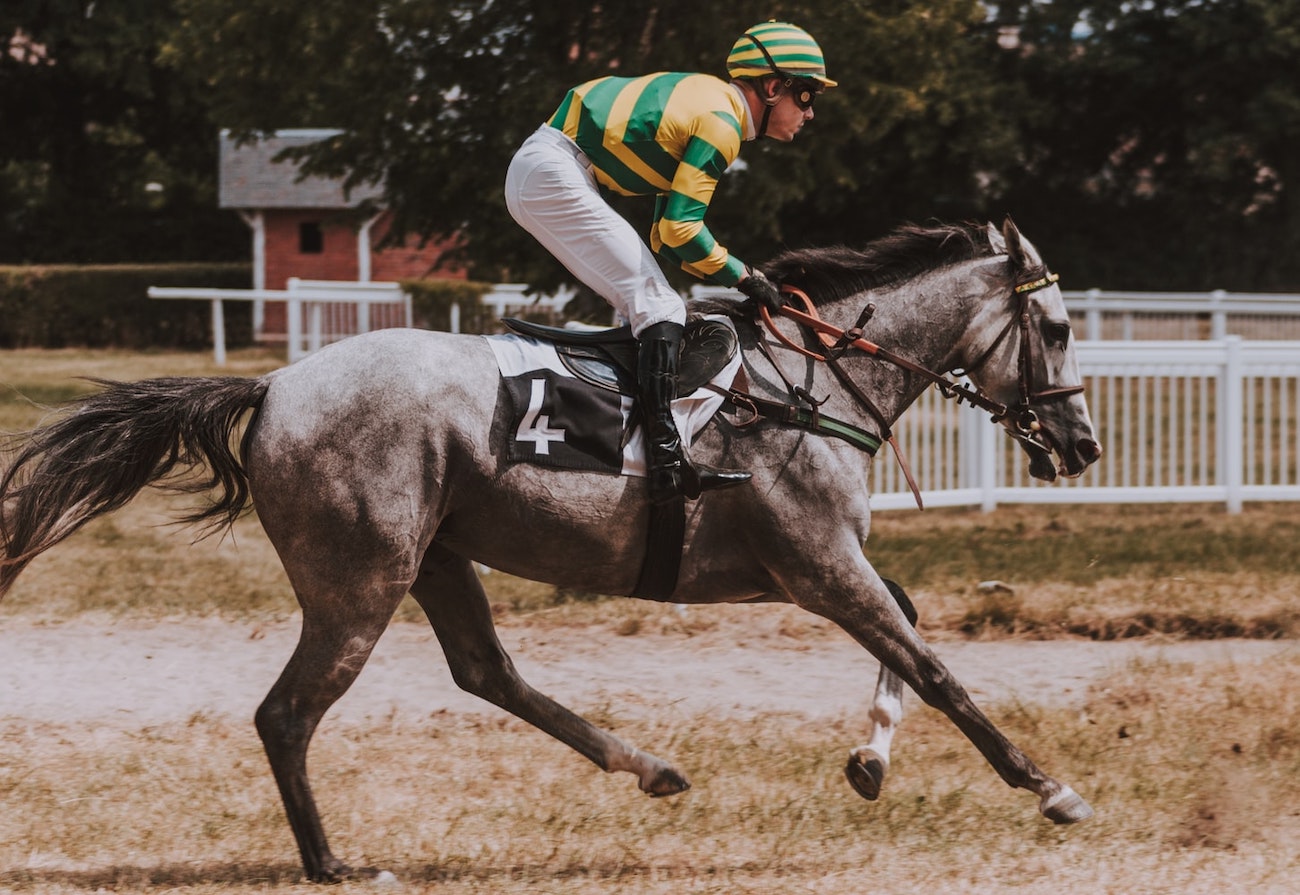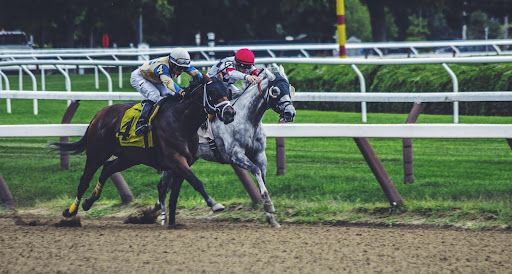
A Brief History of Horse Racing
The taming of horses was a key stage in the development of human civilization. Since then we have been fascinated by horses. For thousands of years, they were an essential part of our society – pulling our carts and helping us to get home before dark.
Since the invention of the car, we have had less and less need for horses. But the obsession hasn’t faded away. In 2009, horses were voted the world’s 4th favorite animal. There are still over 33 million horses living across the world right now. With 10 million horses believed to be living in America alone. Instead of being fascinated by the work the horses do, we now love watching them race.

Humans and Horses
Horses were first tamed in Central Asia in around 45000 BCE. This was long before written records existed, so we do not have an exact date. The horses on these planes were clearly adapted for running, they were lean and fast. They also had a life span of between 25-30 years – meaning that a man would only have to train one or two horses in his lifetime.
Although these nomad groups did use their horses for racing (more on that later), they also made them work. The horses were used to pull around their caravans and scouts raced ahead on horses to check out the upcoming area. The horses allowed them to run away from their enemies and get back to the village in time to warn them of incoming dangers.
By 3000 BCE, it is believed that the domestication of horses was common across most of the world. Horses weren’t just used by nomads now, settled populations found uses for them, as well.

Traveling on a horse could cut a journey down from 5 days to 1 day. Horses and other domesticated animals also made farming a lot more feasible. The animals cut down the time it took to plow fields and sow seeds, freeing up other members of the community to seek out different tasks without going hungry.
By the time the Bronze Age came around, horses were also a staple of warfare. Some were ridden into battle. While others pulled carts and chariots. In the Middle Ages, horses were ridden into battle by knights. With both rider and horse wearing heavy armor.
The inventions of motors and tanks reduced the need for horses to be used in battles. Although they served with military doctors for a long time after the cavalry units were disbanded. Horses’ roles in the military are now mostly ceremonial.

As the invention of cars reduced our need for horses we have discovered new ways that they can help us. Therapy horses are now common in Europe and America. Spending time with the animals and looking after them has been shown to stimulate parts of the brain linked with happiness. This type of therapy has also been proven to reduce levels of depression and anxiety.
Horses have been worshiped since the Bronze Age. They were worshiped for their speed, power, grace, and agility.
One of the earliest pieces of evidence of horse worship comes from the Indus Valley. Where paintings of the horse god Hayagriva were discovered. Hayagriva is still worshipped today by many Hindus as the horse-headed avatar of Vishnu. He has an incredibly interesting role in Hindu mythology.

Horse Racing – ancient
The earliest record we have of horse racing is from around 4500 BCE. The first nomadic tribes in Central Asia that tamed horses were believed to have raced them. However, the first record we have of organized horse racing comes from Ancient Greece. We have records that show the Greeks had horses take part in chariot races and mounted horse racing. Horse racing didn’t gain much popularity in the West until the 12 century.
The sport really took off in Europe as British, crusading knights returned from the Middle East. These nights returned with Arab horses. These horses were faster and lighter than the workhorses that were used in the country at the time.

The nobility of the UK used to race these horses against each other at private matches. This caught on amongst the European nobility, and at one point the sport was almost as popular as jousting in some countries.
Over the next 400 years, more and more Arab horses were imported to Europe. The Arab horses were sought after for both their speed and their endurance. Many nobles made a lot of money by breeding these Arab horses and selling their offspring to other nobles. The sport got increasingly more popular over the years. Soon, the racing matches were not just open to nobles and royalty – but to the general public as well.

Horse Racing – modern
In some time around 1709, horse racing became a professional sport – it was one of the first professional sports in Britain. Races were changed so that multiple horses started to race at the same time and huge sums were placed on these races. As the riders were given a cut, it became possible to earn a living by racing horses.
This development attracted more people to breed horses and more people to bet on the sport. In the first half of the 18th century, the sport exploded.

In 1750, the most powerful men in the sport met in the town of Newmarket. They decided the sport needed more regulation if it was going to continue to be profitable. They formed a group called the Jockey’s Club. This body still governs over horse riding in the UK.
British settlers brought their horses and love of horse racing with them to America. The first track in the country was laid in 1665 – but the first organized racing did not start until after the American civil war. Modern horse racing is made possible by its huge popularity within the gambling industry. With sites like https://www.tvg.com/ offering thousands of different horse racing related odds each year.







